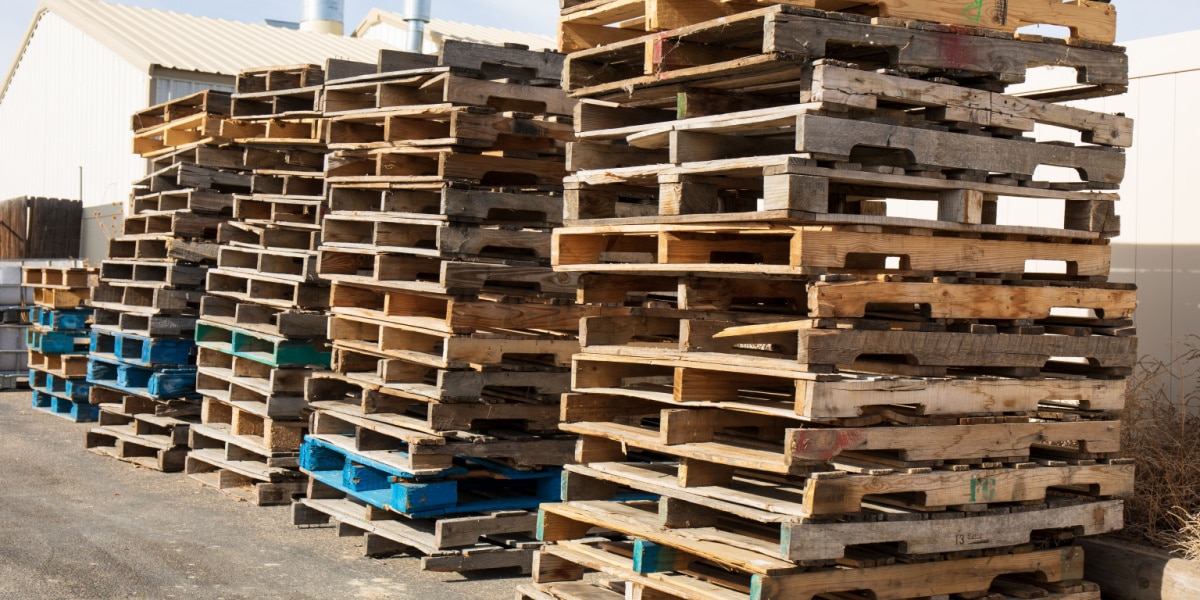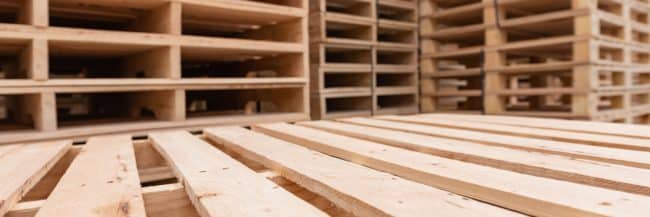
Comparing Different Types of Pallets and Their Uses
Pallets play a critical role in transporting or storing goods in a space-efficient manner. There are many different pallet types, most of which are made from wood, though some types of pallets are constructed from metal, plastic, or a combination of materials.
With so many different types of pallets out there, it can be tough to choose the right option for your business. If you are not sure which pallets will provide the best mix of both value and performance, join us as we explore five different types of pallets and their uses.
What Are Your Options When It Comes to Pallets?
There are several different types of pallets, each of which offers a unique combination of pros and cons. While some pallets provide superior strength, they may be heavier and potentially more costly than less durable options.
When selecting pallets, you can choose your material as well as the design itself. In order to make the right decision, you should consider factors like cost, durability, weight capacity, and what products you plan to load on the pallet.
Common Pallet Materials
The vast majority of pallets are made from wood, generally grouped into one of two broad categories: softwood and hardwood. Hardwood pallets are usually made from oak, whereas softwood pallets are likely to be produced using pine.
Metal pallets may be manufactured from steel or aluminum. Naturally, these pallets are far more costly to produce, which is why they are only used to transport very heavy products.
Plastic pallets are cheaper than metal pallets and offer far better weather resistance than wood options, but they can crack or break under heavy loads, are difficult to repair, and can still cost upwards of $30 per pallet.

5 Types of Pallets and Their Uses
The five different types of pallets and their uses are as follows:
1. Block/Deck Board Pallet
Block/deck board pallets feature a boarded deck on their top sides and cylindrical posts on the bottoms. These pallets can be accessed from any side with a forklift or pallet jack, making them versatile enough for use in just about any facility.
Uses
Block pallets provide a stable platform during transport and are great for use in facilities that stack products on shelving or racks.
2. Stringer Pallet
Stringer pallets use stringers that are installed between the pallet’s top and bottom deck boards to provide additional load support. Since these pallets have reinforced deck boards, they can withstand heavier loads than traditional block pallets.
Uses
Stringer pallets incorporate slightly more materials than block pallets. As such, they are incrementally more costly. Still, they provide much-needed load support when storing or transporting heavy and dense items.
3. Winged Pallet
Winged pallets have deck boards that extend past the stringers, thereby providing additional storage space so that users can transport a higher volume of goods on a single pallet. Aside from the wings, these pallets incorporate a design that is nearly identical to that of a standard board pallet.
Uses
Winged pallets are ideal for transporting a large number of goods, especially lightweight products.
4. Solid Deck Pallet
Solid deck pallets have no gaps between the deck boards, and the solid deck itself can be composed of multiple deck boards or a single piece of plastic, wood, or metal.
Uses
Solid deck pallets are primarily used for transporting or storing smaller products that are likely to get caught in the gaps of traditional block pallets.
5. Double-Face Pallet
Double-face pallets have both a bottom and top deck. As such, either side can be used to store or transport goods.
Uses
Double-face pallets are sturdier than winged, block, or stringer pallets, but they are also heavier and more costly to construct. As such, they are typically only used to store or transport heavy-duty items. They are also easy to stack due to the set of flat, level faces.
Choosing the Right Pallet for Your Application
When choosing from different types of pallets, your primary consideration should be your intended usage case. If you can safely store or transport your products on a particular pallet without risking damage, then it is likely the ideal option for your business.
You should also consider things like durability, cost, and reusability. The cheapest type of pallet may be able to safely transport your products, but if you have to replace that pallet after each use, you are going to quickly erase any initial cost savings that you may have experienced.
Shop Essential Pallet Building Materials at Crane Point
Now that you know what the different types of pallets are and the use cases for each, you must source the right pallet fasteners. That’s where we can help. At Crane Point Industrial, we can provide your business with the materials needed to make all pallet types. For a custom quote or for assistance choosing from the various types of pallets, contact Crane Point Industrial today